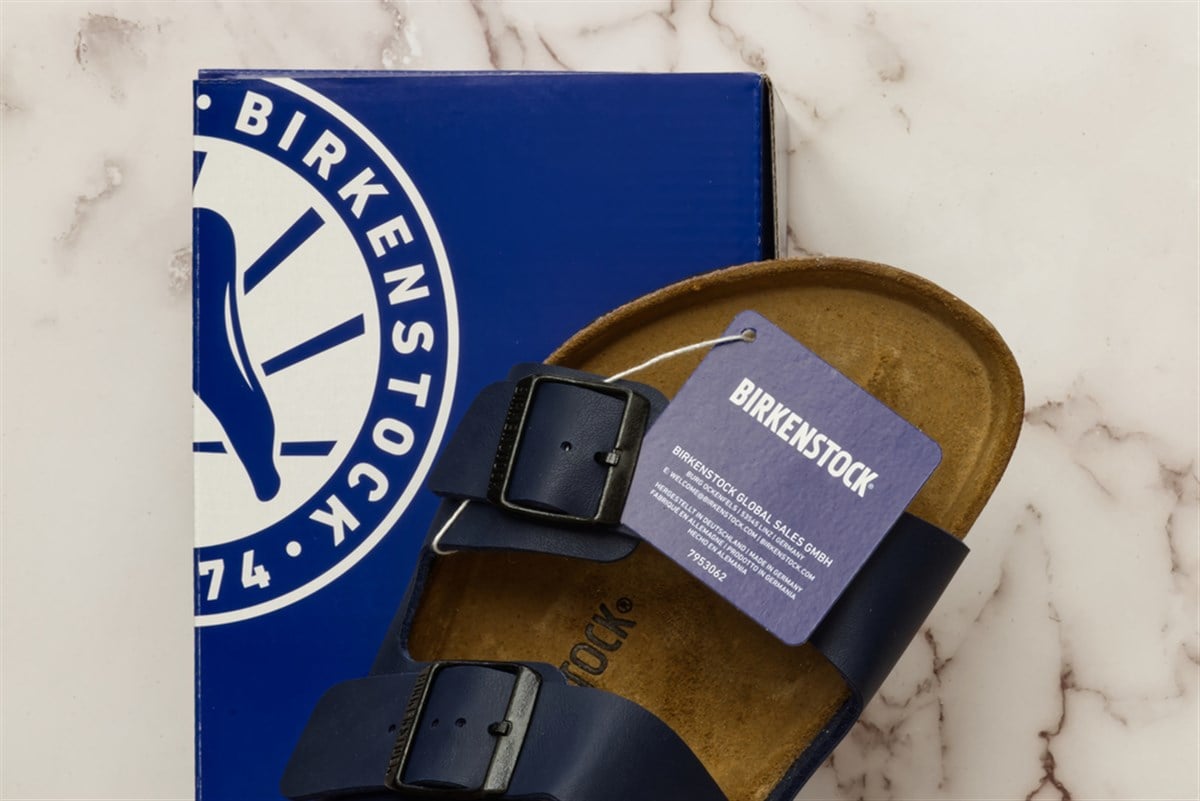
Birkenstock (NYSE: BIRK) has been on a strong run since going public in October 2023. Shares were up 54% prior to the release of its fiscal Q3 earnings on Aug. 29. This significantly outpaced the S&P 500 and the consumer discretionary sector. The Consumer Discretionary Select Sector SPDR Fund (NYSEARCA: XLY) is up 15% since the company’s IPO.
Let’s examine Birkenstock’s operations and how its revenue sources are shifting. We’ll look at its financial results prior to the most recent earnings release and then at how it performed in fiscal Q3.
BIRK: Focusing on Higher-Margin Channels
The company diversifies its revenue sources by channel and geographic region. Its revenue channels are business-to-business (B2B) and direct-to-consumer (DTC). In B2B, a retailer, like a department store, first buys products and then sells them to the customer.
In fiscal 2023, B2B sales made up 60% of the firm’s $1.57 billion in sales, while DTC made up 40%. America accounted for 54% of total revenue, Europe contributed 35%, and the Asia Pacific, Middle East, and Africa (APMA) regions made up 11%. Revenue in all these channels and geographies grew greater than or equal to 20% in fiscal Q2.
Since its IPO, the German sandal manufacturer has reported revenue growth exceeding 20% each quarter over the last 12 months. This is much higher growth than competitors like Skechers (NYSE: SKX) or Crocs (NASDAQ: CROX). However, margins have fallen and have settled notably below pre-IPO levels. Birkenstock still maintains above-average margins compared to a peer group of large and mid-cap U.S.-traded companies in the textiles, apparel, and luxury goods industry.
The company’s business has slowly been transitioning to more DTC sales, as brand awareness around the product is high. This reduces the need for customers to be exposed to the brand by seeing it in department stores. DTC sales cut out the middleman and thus are higher-margin.
The company attributes declining margins over the time DTC sales have increased to expansion costs. This includes costs from increasing manufacturing capacity and those related to improving the company’s website and digital footprint.
Shares Spiral as BIRK Fails to Meet Sky-High Expectations
The company saw shares plummet by over 15% on the day of its Q3 earnings release. This was due to the company falling short on both adjusted earnings per share (EPS) and revenue. Adjusted EPS came in at €0.49 (approximately $0.54), which was 4% below expectations. This was an increase of 11% from the previous year.
Revenue of €565 million (approximately $625 million) was an increase of 19% but came in barely below expectations. Due to the manufacturing capacity expansion costs, gross margin declined significantly from the previous year again. However, in Q2, the gross margin increased by over 300 basis points.
The firm reiterated its full-year revenue growth guidance of 19%, which analysts expected Birkenstock to raise to 20%. Adjusted earnings before interest, taxes, depreciation, and amortization (EBITDA) margin guidance also came in around 40 basis points lower than hoped.
Overall, it wasn’t a bad quarter for Birkenstock. However, the high expectations placed on the firm meant that any type of stumble would have a substantial negative impact. This drop is somewhat similar to another renowned apparel company that reported earnings this week.
Abercrombie & Fitch (NYSE: ANF) saw shares drop 17% on Aug. 28. Abercrombie actually beat all its estimates but issued negative guidance on margin growth. In the current market, stocks that have performed well can suffer significant harm if they fail to exceed forecasts, as demonstrated by these two results.
Expansion Efforts Could Lead to Big Long-Term Upside
I would expect gross margins to continue increasing from Q3 as the negative impact of expansion costs continues to wane. Such harsh judgment of the company’s earnings report feels somewhat unfair as it is working to expand.
This expansion will allow the introduction of new products and the increased ability to reach under-penetrated markets like APMA. Over the long haul, this expansion should greatly benefit the company, although it may cause short-term pain.
The company’s valuation now looks much more attractive. After the release, its forward price-to-earnings (P/E) ratio fell from 37x to 31x. However, the number still sits significantly above the average of 21x for the peer group mentioned earlier.













